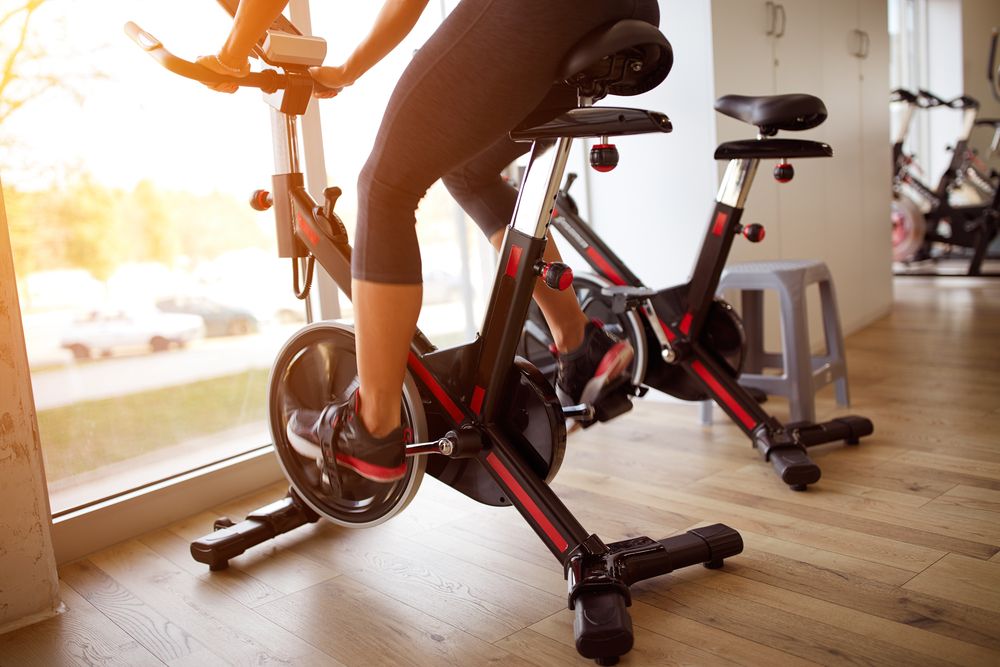Embarking on a weight-loss journey means sifting through various exercise options, each claiming to be the key to success. In this discussion, we're comparing two popular choices: the treadmill and the stationary bike. Which is more effective for shedding pounds?
Both machines provide significant benefits for weight loss and enhancing fitness levels, but choosing the best one involves a detailed analysis. In this article, I'll guide you through the pros and cons of each, focusing on aspects like calorie burn, metabolic impact, muscle engagement, and workout versatility. By delving into these factors, we aim to settle the debate: Between the treadmill and the stationary bike, which is the superior choice for weight loss?
Exploring the Advantages of Treadmill Workouts for Weight Loss:

Imagine a workout that not only helps you lose weight but also tones your body. That’s what treadmill exercises offer. They go beyond simple calorie burning to provide a variety of exciting workout options. Whether it's high-intensity sprints, challenging uphill climbs, or steady-paced jogs, treadmills deliver it all.
Here are some key benefits of treadmill workouts:
Metabolism and Caloric Expenditure: Treadmills are excellent for burning a significant amount of calories quickly, depending on factors like speed, incline, and duration. This accelerates your weight loss efforts significantly. The higher the intensity, the more calories you burn.
Customizable Intensity: Treadmills are highly adaptable, featuring adjustable speed and incline settings. This allows you to tailor the intensity of your workout to match your fitness level and goals. Whether you’re just starting out or are a fitness pro, you can adjust the settings to increase the challenge and push your limits.
Consistency: Working out on a treadmill provides a consistent, controlled environment, making it easier to stick to your exercise routine, regardless of external conditions like bad weather or limited time.
Diverse Workout Options: Treadmills offer a range of workout styles, including interval training, hill workouts, and long-distance running. This variety keeps your workouts interesting and engaging, which is crucial for maintaining motivation and adherence to your weight loss plan. To further enhance the challenge, consider adding a weighted vest to your routine.
Exploring the Advantages of Stationary Bike Workouts for Weight Loss:

Stationary bikes stand out as a powerful tool for weight loss, offering a slew of benefits for those looking to slim down and enhance their fitness, whether at home or in a gym setting. These bikes not only boost your metabolism but also provide the versatility needed to perform a variety of workouts, from intense intervals to more relaxed, steady-state rides.
Here are the key benefits of using a stationary bike for weight loss:
Enhanced Caloric Burn: Engaging in stationary bike workouts can lead to substantial calorie burn in a short period. Factors like resistance level, pedaling speed, and duration of the workout all play roles in enhancing the effectiveness of your weight loss efforts. The more intense the workout, the more calories you burn.
Adjustable Resistance: One of the prime features of stationary bikes is the ability to adjust resistance levels. This customization lets both beginners and seasoned cyclists fine-tune the workout's difficulty, potentially increasing calorie expenditure and challenging the leg muscles, which can accelerate weight loss.
Consistent Workout Environment: Stationary bikes provide a dependable and controlled environment for exercise. This consistency ensures that you can stick to your workout schedule regardless of external conditions such as bad weather or limited outdoor space.
Versatility in Workouts: With options ranging from high-intensity interval training to endurance sessions and simulated hill climbs, stationary bikes prevent workout routines from becoming monotonous. This versatility keeps motivation high, which is crucial for sustained weight loss efforts. Adding variety through different resistance settings or interval training can keep the routine engaging.
Lower-body Focus: Stationary bikes specifically target the lower body, engaging quadriceps, hamstrings, glutes, and calves. Regular use not only strengthens and tones these muscles but also improves lower-body endurance and overall functional fitness.
Ideal for Recovery and Accessibility: Stationary bikes are particularly beneficial for those with upper-body injuries or other limitations that might restrict certain types of exercise. They allow for continued physical activity, ensuring you can maintain your fitness routine even when dealing with physical constraints.
Treadmill vs. Stationary Bike: Which is More Effective for Weight Loss?

Treadmill workouts generally induce a higher metabolic rate than stationary bike workouts. This is primarily because running on a treadmill involves multiple muscle groups, enhancing metabolic activity, whereas stationary biking primarily targets the lower body, which can limit the intensity of the workout. Treadmills also provide a diverse range of training options and adjustments, adding to their versatility.
On the other hand, while stationary bikes do allow for varying resistance levels, they offer less variability in workout intensity compared to treadmills. However, the key to effective weight loss with either equipment is consistency and user engagement.
Both the treadmill and stationary bike can be instrumental in reaching your weight loss goals, but the choice between them should be based on which one better suits your preferences and keeps you motivated over time.
Here’s a quick comparison:
Treadmill:
- Engages multiple muscle groups, including legs and core, for a comprehensive workout.
- Offers a variety of training intensities and features such as incline adjustments, accommodating everything from brisk walks to intense sprints.
- Typically burns more calories per session due to its weight-bearing nature.
Stationary Bike:
- Provides a low-impact workout that is easier on the joints than running.
- Focuses on the lower body, strengthening quadriceps, hamstrings, glutes, and calves.
- Features adjustable resistance to customize workout intensity, suitable for different fitness levels.
- Particularly beneficial for those with joint concerns or recovering from injuries, offering a safer, more comfortable workout option for individuals with back pain or balance issues, thanks to its seated position.
What are the most effective exercises for the treadmill and stationary bike?

You can seamlessly integrate these workouts into both the treadmill and stationary bike routines, with each method demonstrating its effectiveness in enhancing calorie burn!
Consistent Cardio
Consistent cardio sessions are key to maximizing weight loss endeavors. Aim to keep your heart rate between 60% and 70% during these workouts. If you don't have a heart rate monitor, judge your effort level using the "conversation pace" method—push yourself while maintaining a pace that allows you to comfortably chat with a friend.
For this workout, you have two choices: Begin with one to two sets, each lasting 15 to 20 minutes of continuous movement, or opt for a single session lasting 30 to 45 minutes. As you progress, strive to increase either the total distance covered or the duration of your workout.
Additionally, consider increasing the challenge by adjusting the treadmill's incline or elevating the stationary bike's resistance in subsequent sessions. These gradual tweaks will help push your limits and enhance the efficacy of your workouts, bringing you closer to your fitness and weight loss goals.
Cardio Intervals
Incorporating interval training into your cardio workouts adds an engaging and effective twist to your routine. By incorporating shorter bursts and minimizing rest periods, you can inject excitement into your workout while maximizing the benefits of the treadmill or stationary bike for weight loss.
To optimize the effectiveness of this workout, aim for one to two sets, each consisting of five to 10 rounds. During each round, engage in three minutes of movement at a moderate pace, pushing yourself while maintaining control.
After the movement interval, take a one-minute rest period, during which you should reduce the intensity to a low or low-moderate level. This alternation between active and rest periods elevates your heart rate while providing brief recovery windows.
Between sets, allow for a longer rest of two to three minutes to fully recover before embarking on the next set. This structured approach maximizes calorie burn and muscle engagement, contributing to your weight loss objectives while ensuring adequate recovery to prevent overexertion.

